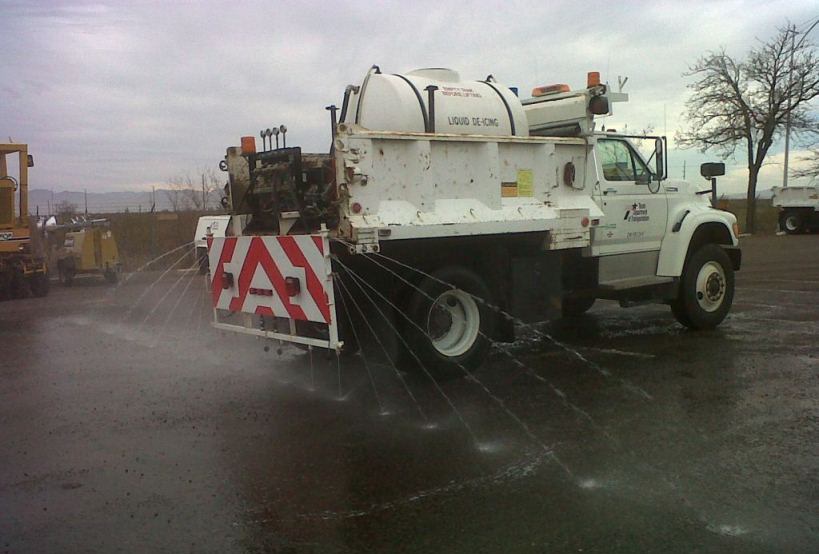Section 3: Liquid Chemical (Chemical Solution) Application Capability
Anchor: #i1000877When to Use Liquid Chemicals
There are advantages for using liquids at pavement temperatures of 23 degrees Fahrenheit and above. These include:
- Anchor: #ORYPAXME
- a bond breaking film is created between the pavement and any buildup of snow and ice that may occur allowing easier removal of the snow or ice Anchor: #JACUYWCK
- reducing time and effort required to plow and clear roadways.
However, this means putting the chemical down before enough snow has accumulated to prevent the chemical from reaching the pavement or from being excessively diluted. In some situations it may be beneficial to remove snow and slush from the road using traditional mechanical methods.
Traffic plays an important part in the use of liquid chemicals. They should not be applied as a fog on the entire roadway. Instead, liquid chemicals should be applied by the drip or stream nozzle method, allowing traffic to track the material across the roadway. Therefore, there must be sufficient traffic volume to track and spread the material on the road.
Liquids can be used at pavement temperatures below 23 degrees Fahrenheit by following the manufacturer’s suggested rate of application for varying conditions. The cost effectiveness of using liquid chemicals at lower pavement temperatures needs to be evaluated on a case by case basis.
Application should be made by stream nozzles allowing traffic to spread the material over the pavement surface. Fan nozzles should not be used with certain anti-icing materials due to the possibility of creating a slick pavement situation.
Figure 2-1. Application of liquid chemical by stream nozzles.
